Thursday, 10 p.m., Walmart parking lot: a mustachioed man in a serape takes a selfie.
“I was too late to get in at the campground,” he tells me, so he chronicles his night of missing out in photos he sends to his friends.
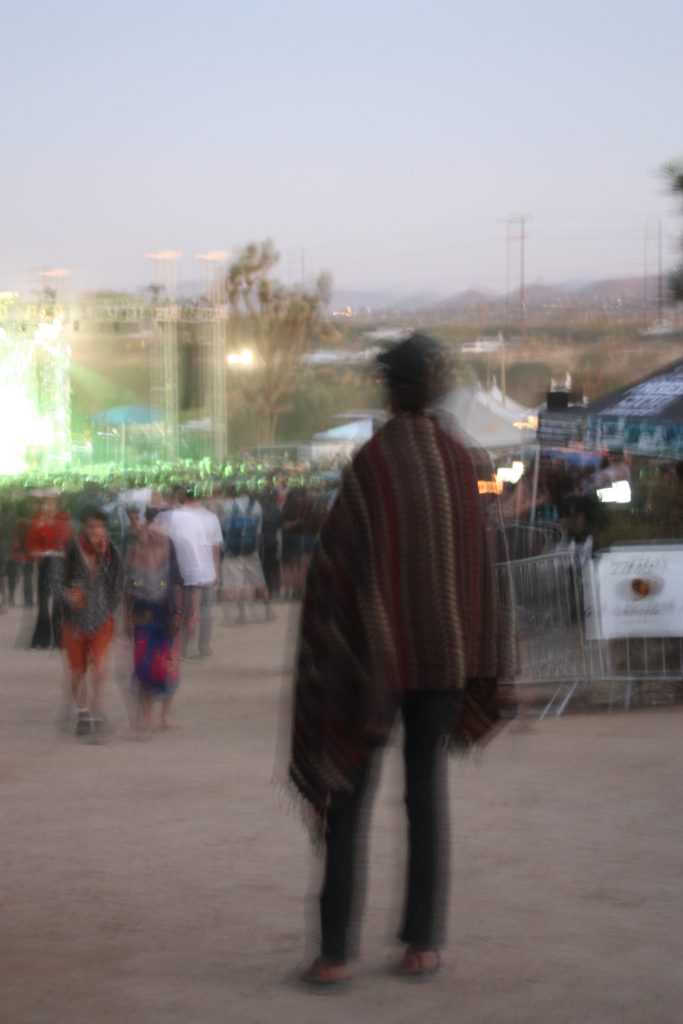
Like many others, he would arrive to the Desert Daze campground for the rest of the weekend on Friday. On-site campers envelop themselves in the experience by choosing never to leave the Institute of Mentalphysics, where the festival has been held for the last two years. The Institute, the website proclaims, is a spiritual retreat center built atop a sacred site — the convergence of three underground aquifers, which gives the land an unusual magnetic field — by Frank Lloyd Wright. Festival goers are happy to stay enclosed in the festival’s embrace, either at 12 hours of music each day or in the myriad art installations. Like many music festivals today, Desert Daze is more than music; it’s an experience that stands in for a lifestyle.
Founder Phil Pirrone sells the festival as a place where “cynical rock & roll motherfuckers can have a spiritual experience.” Iggy Pop’s energetic Saturday night set embodied punk rock cynicism without any measure of spirituality; but Ian Svenonius, the frontman for the post-punk D.C.-based band The Make-Up, combined punk cynicism with New Age spirituality in his opening ceremony on Friday night.
Svenonius was joined on stage by two women in tan hooded cloaks, holding gongs and candles. He began espousing New Ageisms, telling the audience that we are insignificant grains of sand, and sharing what he has learned from the desert. On dark nights, he hears the planets talking, he confessed. From these conversations, he’s learned that Earth has a disease called capitalism.
As he voiced the planets’ concerns, he told us that Venus and Mars took revenge on their capitalists by making their environments uninhabitable — and that Earth should do the same. Earth replies to their concerns by saying: “I’m going to get rid of them, but I’ve got to do something first…there’s this festival I want to see.”
In the dying days of capitalism, we should party.
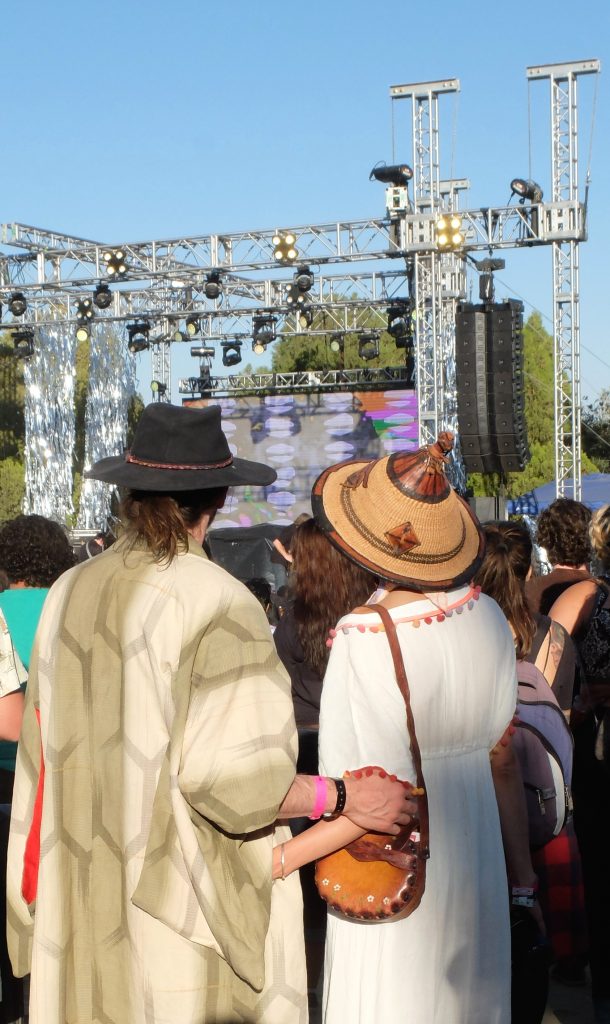
Few people who I met at the festival described it as a party. Instead, attendees contrasted the chill vibes of the Institute’s sacred geometry to the oft-derided Coachellafest, and attended sets of shoegaze bands like Spiritualized with enthusiasm. The most hardcore music fans explained the draw simply: have you seen the line-up?
Others were entranced by the experience. Two San Diegans dressed in the burnt ochres and teals of faux-hippie attire told me that Desert Daze is different than their regular festival attendance precisely because the place is so sacred (this is a self-evident truth; sacredness doesn’t require explanation). The special location counterbalances what they saw as an unimpressive lineup — how were they supposed to dance without EDM?
This isn’t to say that they didn’t love the festival; they tried to impress me by saying that they spent at least an hour meditating in Cristopher Cichocki’s art installation, entitled “Circular Dimensions: Hypnosis Cycle.” In the circular sanctuary of the Institute, multilayered images were projected on the walls and ceilings and fluorescing bowls and a sculpture of a tree in the center while sounds droned in the background. (Another visitor’s review: I did not bring enough acid for this, having brought none at all.)
Crystals around their neck symbolized their New New Age affiliations, and showed that they’d been following the growth of astrology and the healing powers of crystals. It was clear that their crystals are more fashion statements than religious icons, though they tried to prove otherwise.
Later, I stopped at the crystal shops that dotted the festival, asking about the gems that people buy for luck and power. One seller told me business was good, but that she was disappointed at how low sex toy crystal sales had been. Another seller told me in great detail about his gem collection, from the calico pyrite that he sources locally to a fluorescing lab-made crystal that fascinates him. The buyers here were wishy-washy LA types, he told me; they’re nothing like the gem and mineral shows he frequents.
“Honestly, I’d do better selling LSD.”
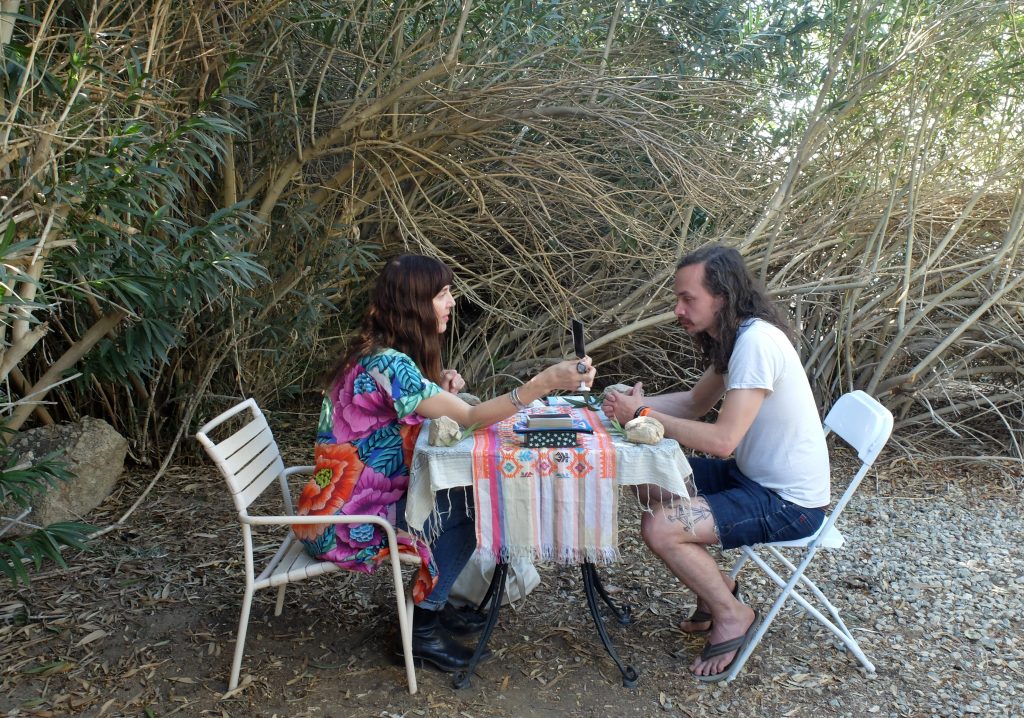
All trip stories are boring, and Desert Daze’s were no exception. Drugs and drug talk were everywhere, used as an escape from mundane LA and a special reason to be in the desert. Most of the talk was about acid, but it was agreed that Panda Bear’s background visuals were too terrifying unless you were on molly.
“Do you know the name of the security person who helped me? I want to thank him.”
“I should have done acid this morning because the sky was so nice.”
“Hey, do you want a couple of tabs?”
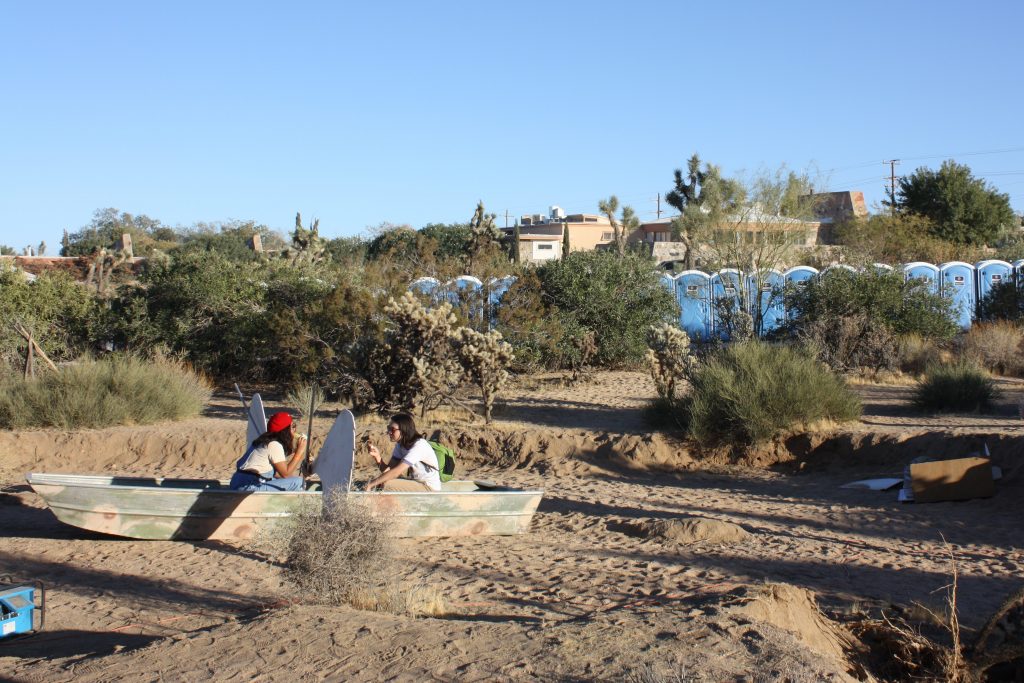
In between sets on Friday night, we tried to escape the noise by sitting on a couch next to an art installation blasting Indian condom commercials interspliced with nature videos. Two Echo Parkers joined us, and we chatted about why we were there, what we’re going to see next. Deadly serious, the woman in a bolo tie told us that this was one of the last places that was still intact, and that we were all going to live in a horrible futuristic world soon enough.
“I wanted to move to San Francisco, but it’s ruined now,” she said. “I want to be here while Joshua Tree is still intact, before someone can tell me ‘you missed out.’”
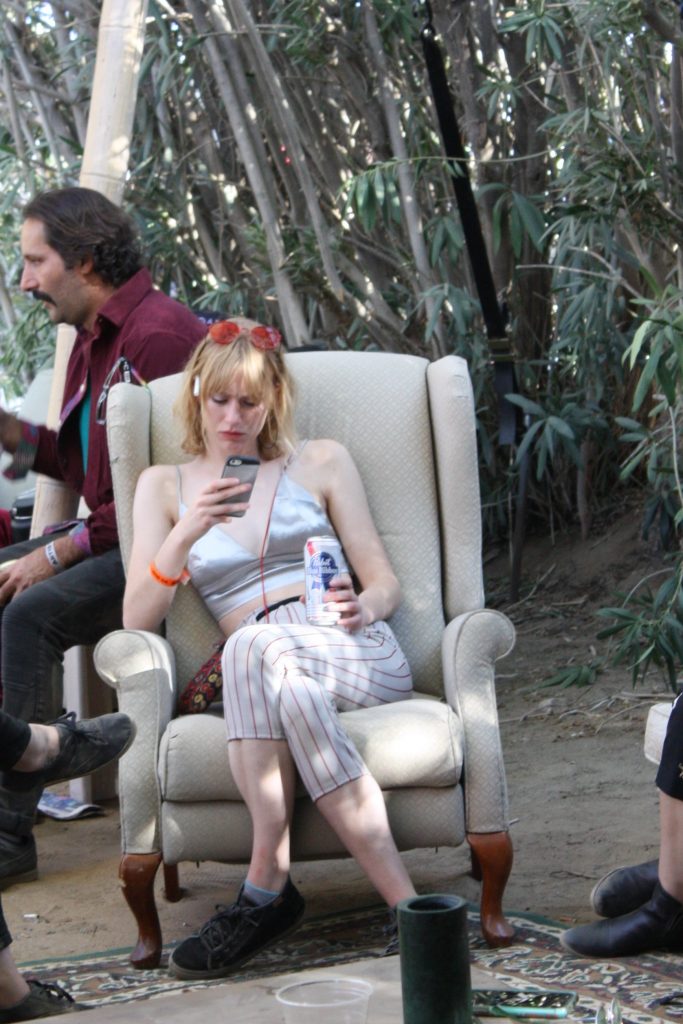
The fear of future missing out that Desert Dazers experience at the festival — the fear that also draws them there in the first place — manifests as a need to simultaneously capture everything, live in the moment, and escape from Los Angeles into the pristine desert.
Many do this through Instagram, and the desert has long been a favorite amongst photographers predating the app’s filters. Perhaps the most famous turn-of-the-century desert traveler was John C. Van Dyke, an art historian at Rutgers. In his bestselling book (aptly titled The Desert), he praised dust as the reason for the desert’s beautiful colors: “seen through dust-laden air, it may appear topaz-yellow, sapphire blue, bright-lilac, rose-red.” More than a century later, festival-goers still Instagram the desert’s colors, now caught in the haze emerging from the footsteps of the thousands who attended.
The overgrazing-induced dust from Van Dyke’s time is mirrored in the present, with people replacing cattle as the primary desert dust-producers. They lend an eerie haze to Instagrammed photos, creating fake fog in front of sets at the main Moon stage and sculptures from the artistic part of the festival.
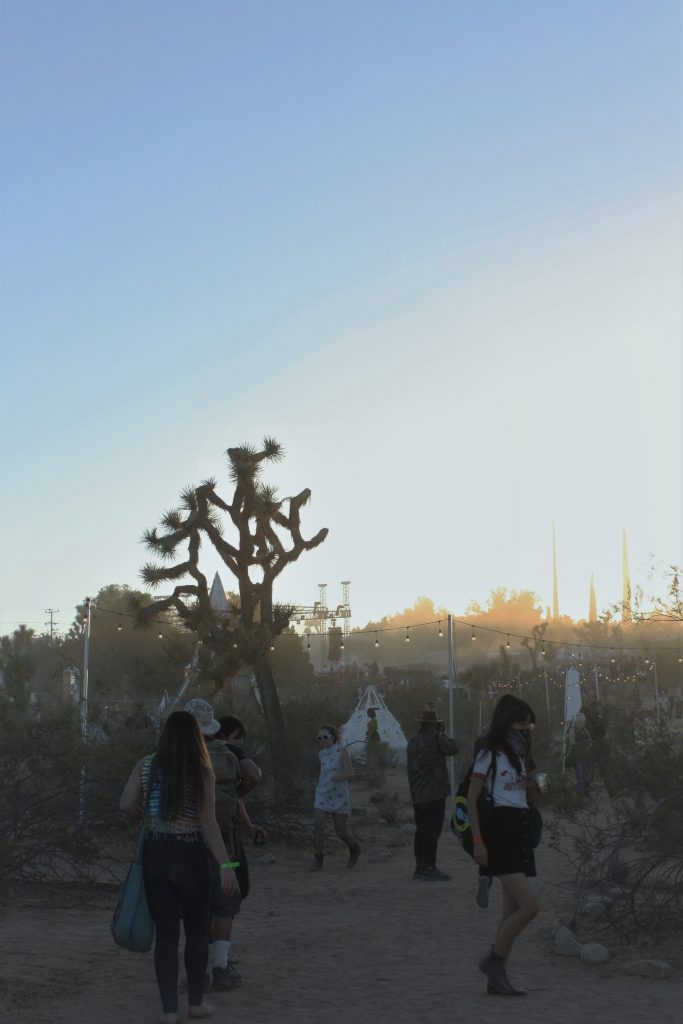
The attendees don’t realize they’re the cause of the hazy filters they prize, nor do they see the ways their presence is exactly what locals view as ruining the village of Joshua Tree. Locals cringe when they see the massive parking lot that was created last year that kept joshua trees (Yucca brevifolia) intact without keeping the surrounding plants that sustain the plant community. I winced at the sound of my initial arrival to the festival, when I saw a car drove over a yucca, crunching over it to claim their parking spot. I watched as shrubs located in the walkway slowly disappeared during the course of the weekend. Though local opposition to the event was smaller this year in comparison to the last, the festival could certainly improve.
On Monday morning, I drove into town for a meeting. The dust plume lingered the morning after, hanging over the so-called sacred.



